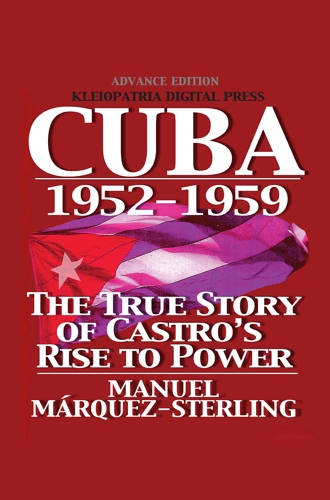Pioneering and innovative use of technology in pre-Castro Cuba included a major baseball event: using an airplane as a relay to bring the 1955 World Series as a live TV broadcast to Cuban audiences. That year Cuban fans were thrilled to see—live—Cuban baseball player, Edmundo ‘Sandy’ Amorós, left fielder for the Brooklyn Dodgers save the game with bases loaded, by catching a drive by NY Yankee Yogi Berra and turning it into a double play at the bottom of the seventh inning, winning the 1955 World Series.
To make this possible (long before satellite TV) engineers custom-equipped a Cubana Airlines DC-3 which flew a circular pattern between Key West and Havana, acting as a relay transmission station for the live TV signal. The airplane took off a half hour before the game and remained airborne throughout, flights lasting about three hours. Below is the schematic diagram for the signal distribution and mixing system.

The Old Republic that was pre-Castro Cuba was a voracious early adopter of new technology, not least TV. Cuba was the first Latin American country to have television, and the first to televise baseball games—a national passion. In December 1946 it conducted one of the earliest experimental multi-point live TV broadcasts. Regular commercial TV broadcasting began in October 1950 with Gaspar Pumarejo's Union Radio TV, and a second station (Goar Mestre's CMQ, later an NBC affiliate) began broadcasting in December 1950. Three additional channels were established by 1953. By 1954, CMQ-TV had expanded into a seven station network, making Cuba the second country (after the US) to have a national TV network.
Regular (16 hours/day) color broadcasting began in 1957, by which time Cuba had 45 television sets per 1,000 inhabitants, far more than any other Latin American country and more than all but four countries in the world (US, United Kingdom, Canada, and Monaco). By 1957 Cuba had 23 TV stations, and in 1958 two of these became color stations. Not only was Cuba the second country in the world (after the US) to have color TV, it did a decade ahead of a good part of Europe. France, Germany and the UK began color broadcasting in 1967, Holland, Switzerland and the USSR in 1968, remaining European countries between 1969 and 1972. Cuba's Golden Age of Television ended with the advent of the Castro regime, which quickly seized all broadcasting stations. Color transmission ended in 1959 not to return to the island until 1975, and then on a much smaller scale.


 Mobile subscription
Mobile subscription


